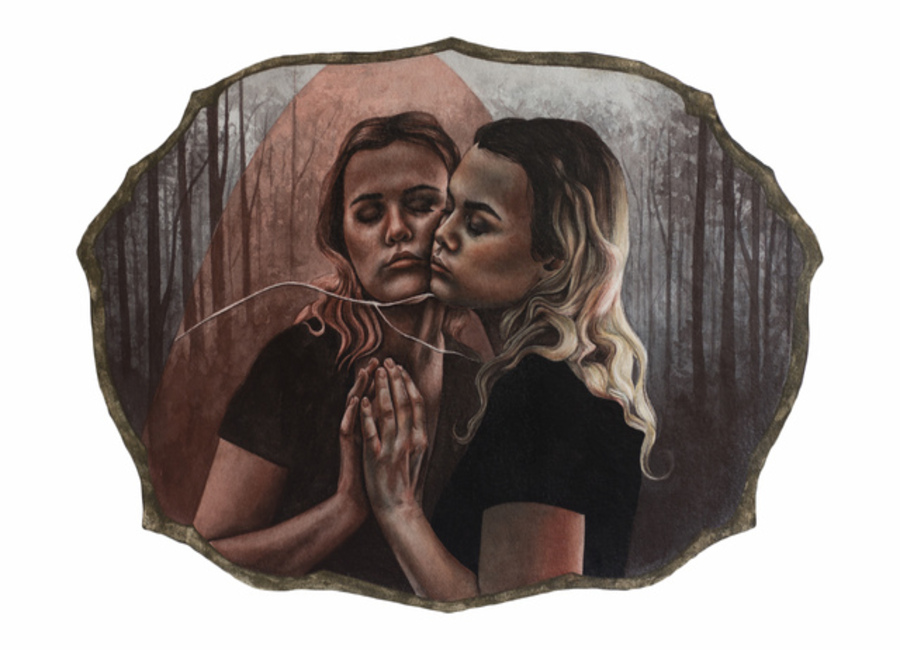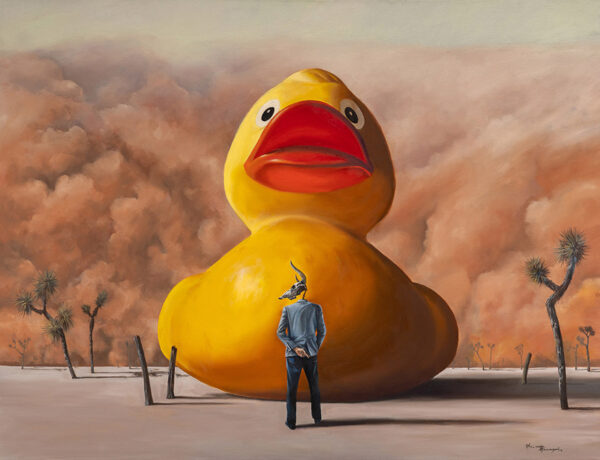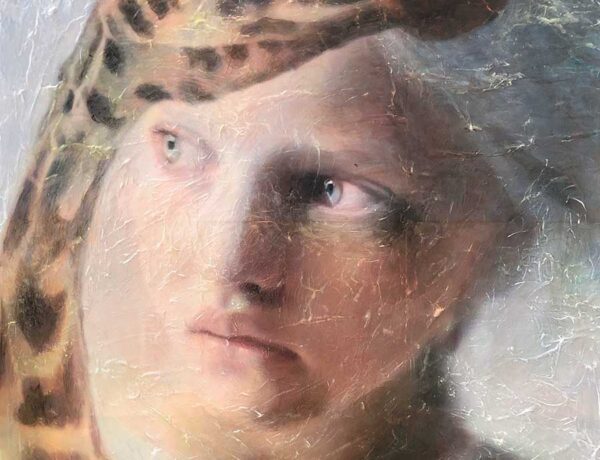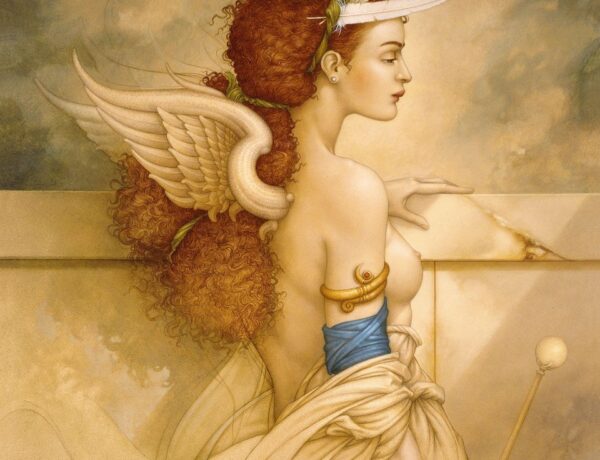Michelle Avery Konczyk is a watercolor artist based in Philadelphia. Her unique artworks garner as much enthusiasm online as it does in real life. She agreed to share some of her artistic wisdom with us at Beautiful Bizarre.
Melting eyes and stretched faces are part of Michelle Avery Konczyk’s world. The artist explores the world of the macabre with effortless pazzazz. Dismembered bodies and melancholic eyes coexist. As well as stretched limbs and fleshy hands. Michelle Avery Konczyk is a self-taught painter.
As long as she can remember, she always wanted to be an artist: “Art started being a huge part of who I am since I was in high school”, she shares.

Subsequently, her art grew up with her and has evolved into what it is now, a captivating ensemble with esoteric undertones that deals with themes such as pain, death or decay. However, even though such themes could easily be perceived as overwhelmingly dark, she delves into them with alluring whimsy. We see limbs stretched like fabric, challenging the frontier between material and immaterial: “I like the idea of reality and questioning it. Playing with this concept of what is real or what isn’t.” Duality is not a novelty in art. Michelle Avery Konczyk knows how to materialize it through different means. Whether it is through duplication, mirror effects or stretching figures.
I enjoy creating twin effects. It is like representing two versions of yourself. I play with this aspect a lot. The spectator looks at the same person from different sides. There’s the real Self versus the idea of cutting yourself to fit someone else’s box.
From a technical viewpoint, Michelle Avery Konczyk uses her watercolor to breathe life into her pieces. She creates color gradients that pour out of her subjects’ forms. Indeed, the artist builds and blends colors into one another meticulously. Certainly, this technical precision can be surprising to the unitiated eye. In fact, this effect does seem unconventional. We asked about the melting effect in artworks such as Mister Velvet (Watching A Bath). The artist answered :
“In order to create a melting effect, I use a ruler to draw straight lines. Then I use a very small brush. It is time-consuming. It often requires magnifying glasses”.
Melting eyes are a regular occurence in Michelle Avery Konczyk’s work. It invites spectators to lose themselves inside the gaze of the women she portrays. People often say that eyes are the windows of the soul. This idea implies that simply looking into someone’s eyes can make us understand how they feel. Yet, Michelle Avery Konczyk’s subjects are not always expressive. Their eyes often stare emptily into an evasive void. However, their depth and singularity are undeniable. What is hiding behind those watery eyes? “Portals to the soul”, jokingly answers the artist.
“If the eyes I paint are on a body it is usually to express something about how the character is feeling. Or if there are eyes around them, there is this idea of lurking or watching.”
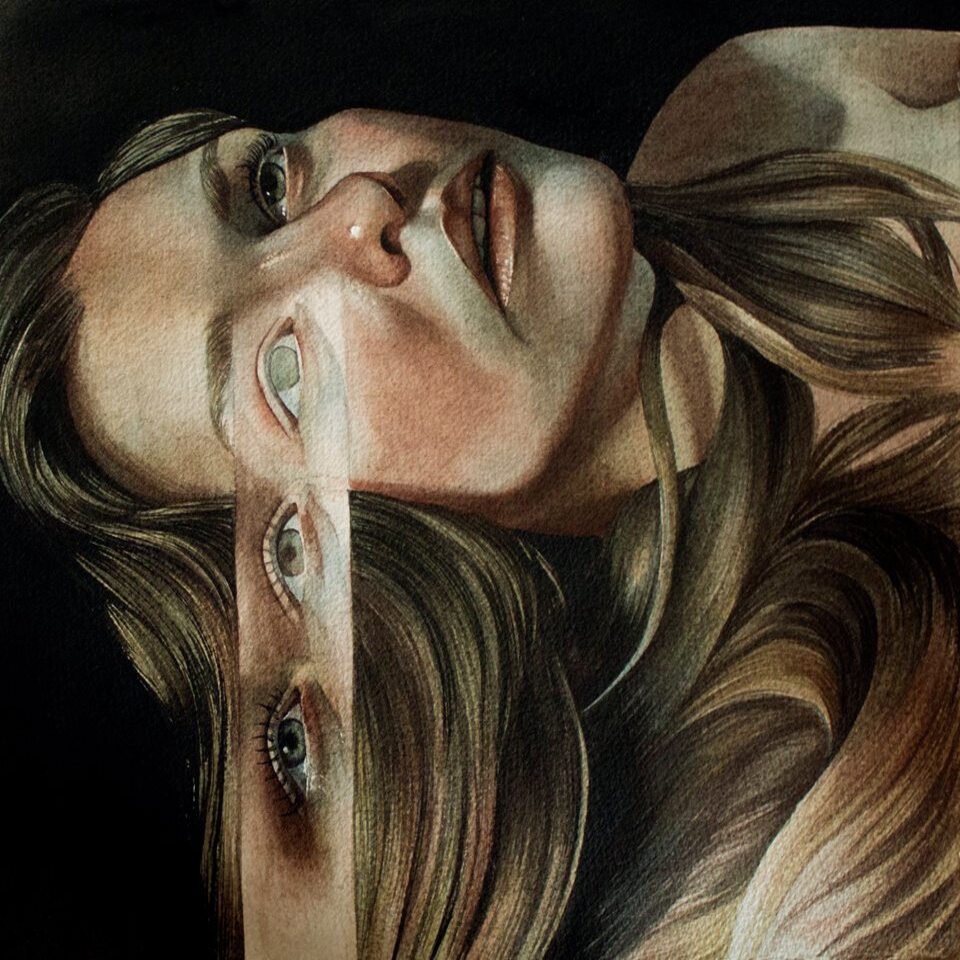
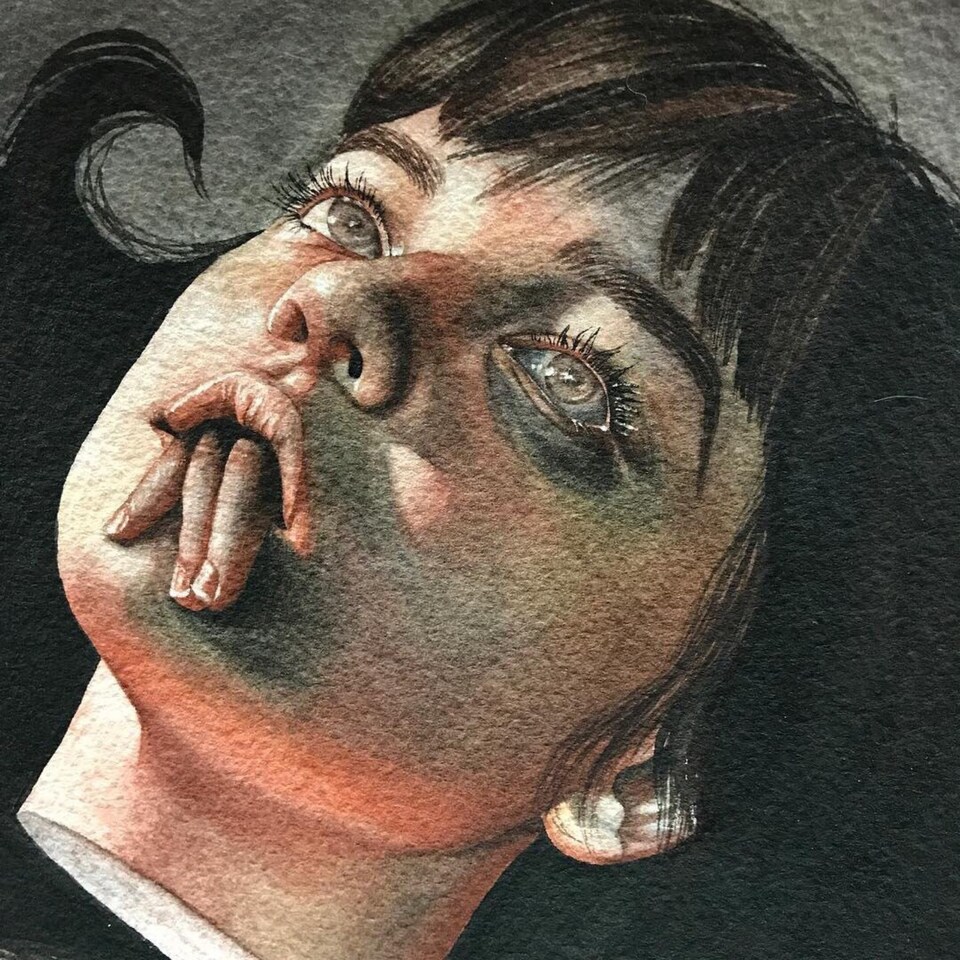
I use my art to work my way through life and process emotions.
Faces and hands, either detached or attached to human bodies offer an eerie spectacle. But whose bodies are they? Who are the women haunting Michelle Avery Konczyk’s universe? “The feminine figures in my art are all me. I use my art to work my way through life and process emotions”, says the artist. Even when the faces she paints do not look like her, the artist insists: “They’re all me”. In fact, she uses her art as she would a diary: by laying her innermost feelings on paper. Her art is the aesthetic expression of her existence. She projects herself into its enigmatic message. The artist works on herself both literally and figuratively. Perhaps, we could see it as a detour or a self-aware symbolization.
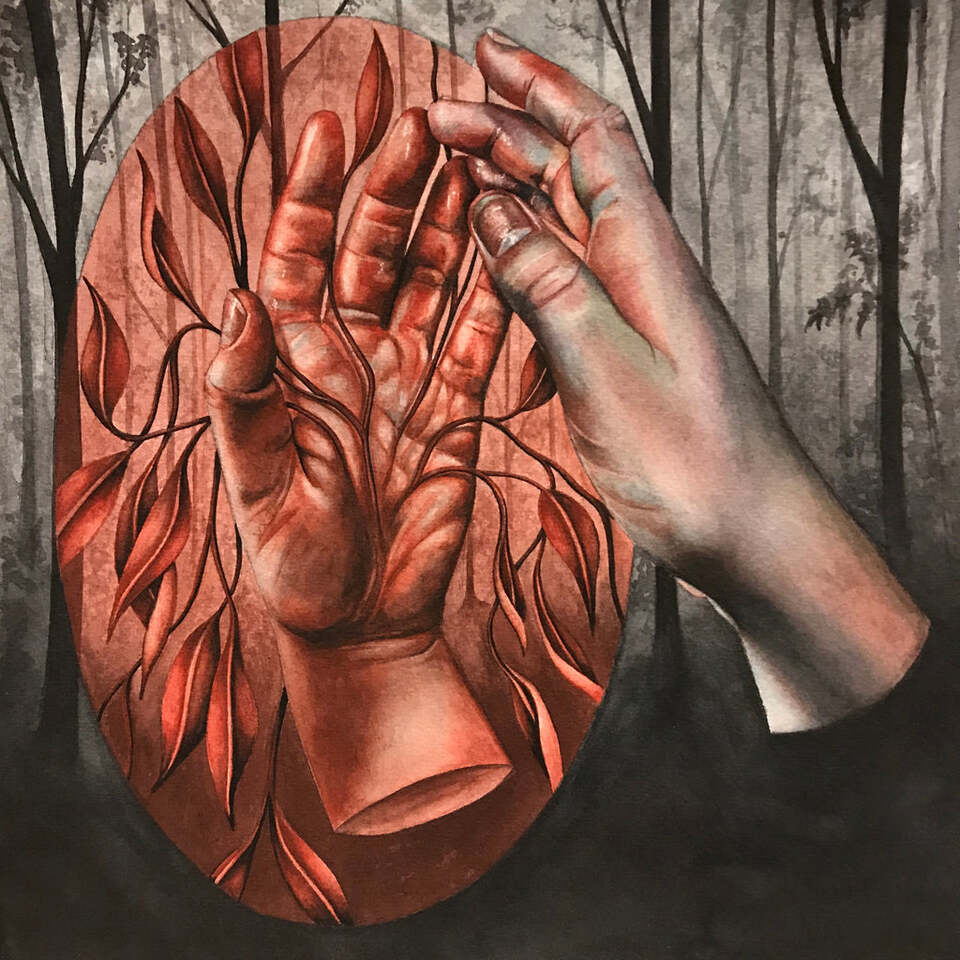

I grew up obsessed with all things supernatural and non-human elements.
The enigmatic aspect of Michelle Avery Konczyk’s work is also tied to her relationship with nature: “I like bringing nature. It is grounding. It puts you in a space.“
The artist is not afraid of grounding the faces and hands she paints into a specific landscape. Whether it is a dark forest or funeral flowers such as baby’s breath. She uses them for what they are and what they could be interpreted as.
“Baby’s breath is known as the filler flower. They’re kind of there to take up space. They’re not always what everyone has their focus on.”
When we suggested that her artworks looked like they could be found in a forest witch’s home, the artist seemed amused. She spontaneously established connections between nature, the supernatural and her own existential empirism.
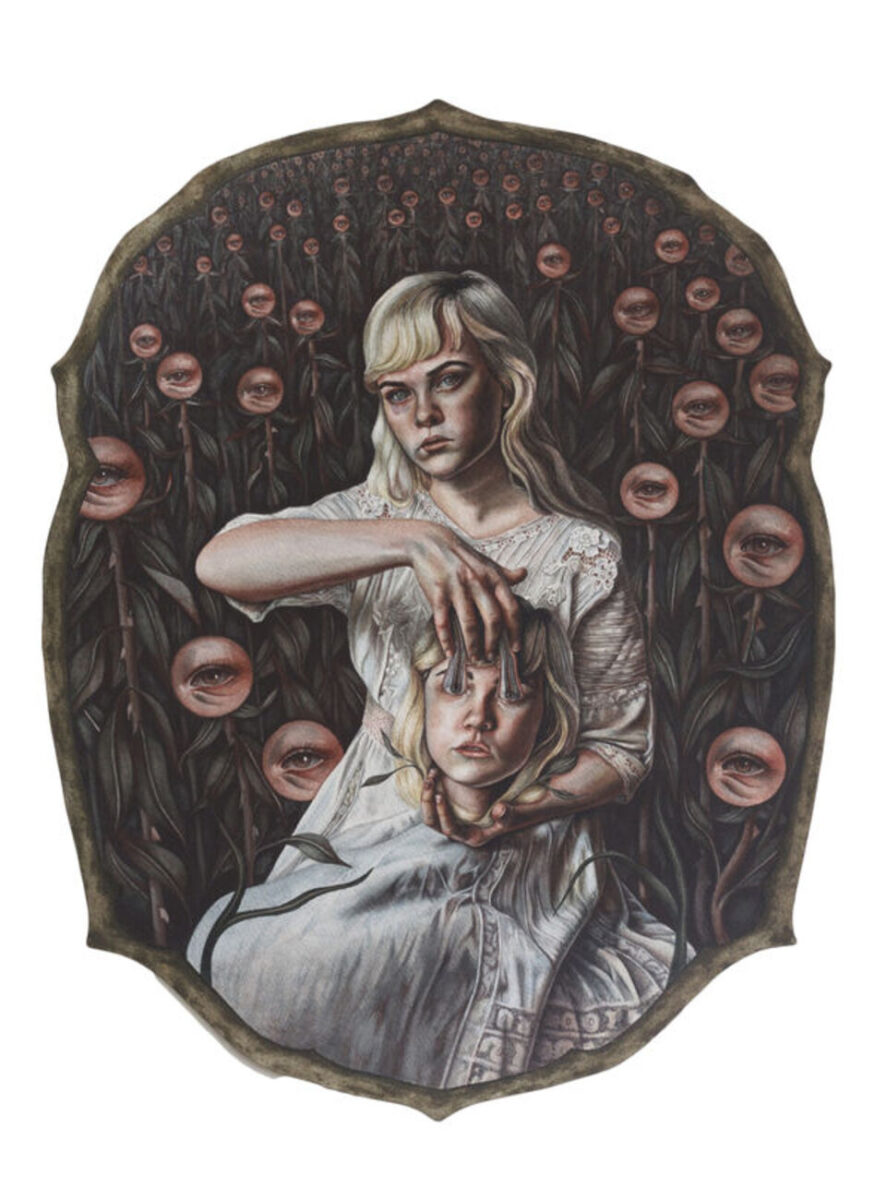
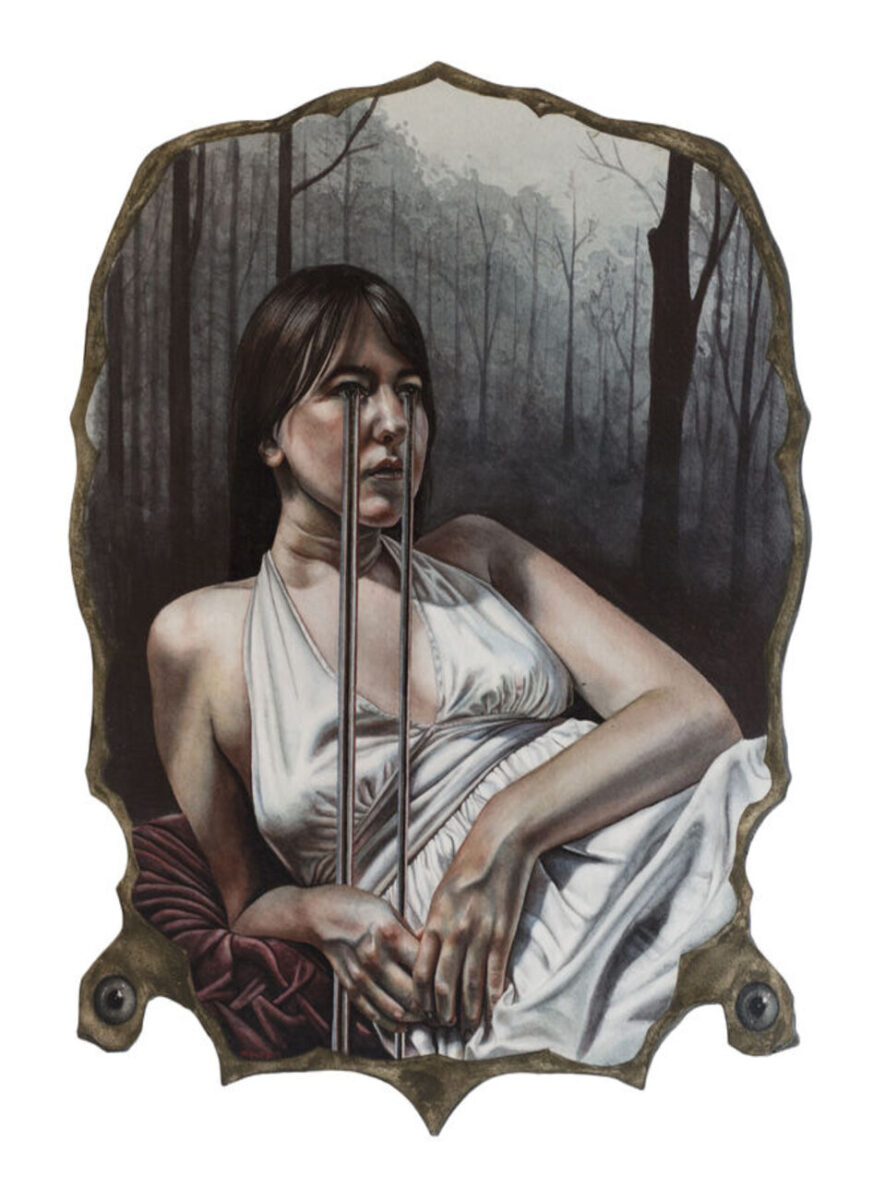
I like the concept of other dimensions such as dreams. Dreams inspire me a lot. I pull from them.
It is clear that Michelle Avery Konczyk has a desire to integrate nature into her work. She sets the scene, allowing us to immerse ourselves into the mystical woods of her poetic mind. Nature is also present in the form of the wood she works herself in order to frame her work. This aspect of her process is what makes her art all the more unique. There is a sort of mise en abyme in her practice. Indeed, it draws parallels between the physical reality of what it entails to gather wood and the imagined representation of the woods inside her work.
“Since I was 8 or 9 years old, my dad taught me there weren’t any limits to what I could do. When it came time to think of alternatives for framing, I said to myself “oh! I should just cut some wood!” so I just went outside and cut some wood!”
With a cheerful keenness, Michelle shared with us what her vision was. The artist probably made it all sound easier than it truly is. The technique involved in crafting these frames is one that can evade many of us. She is able to turn a hard fibrous material into what could be seen as somewhat baroque framing designs.
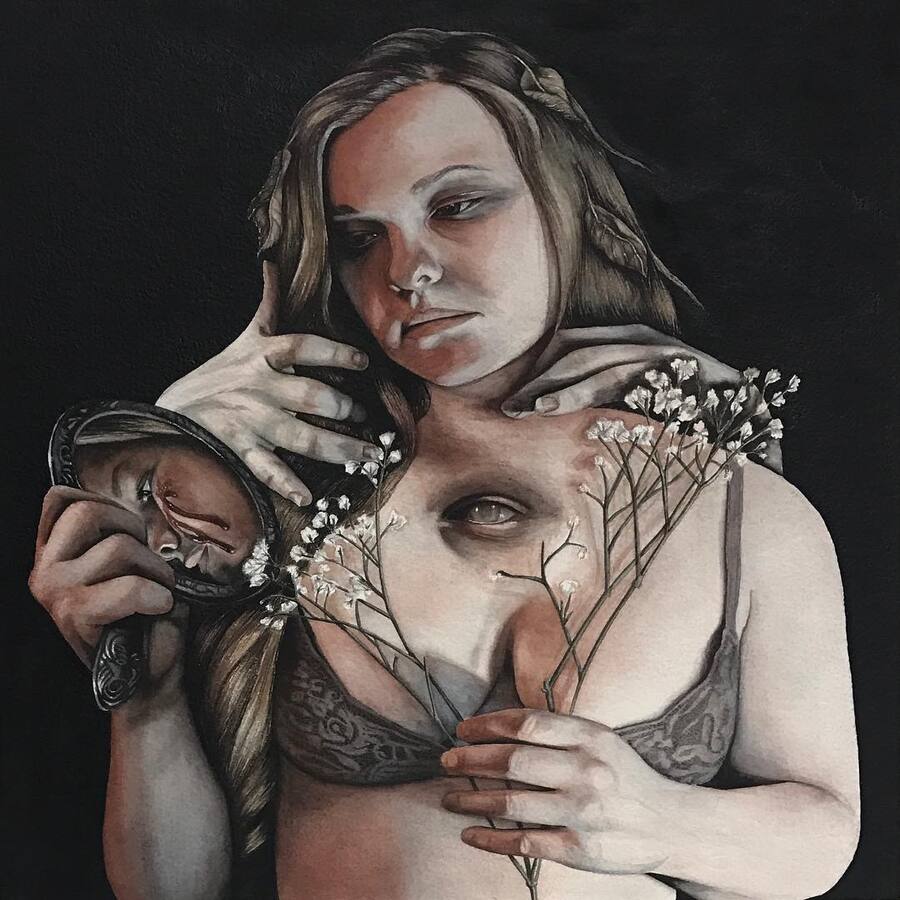
Moreover, Michelle Avery Konczyk knows how to materialize the suffocating heaviness of what it means to be a woman. Open chests filled with lugubrous trees or inquisitive eyes. Foreign hands running their fingers through her hair. Lamblike madonnas, contemplatively accepting their fate or silently expressing sadness. Indeed, the artist dives into the material of her own existence to extract a commonly shared experience.
The subject is me but if there are extra hands I tend to view them as someone else. In my work, a lot of elements are meant to depict the outside world or perhaps another person.
Perhaps these invisible hands belong to the societal pressures that characterizes women’s lives. Perhaps we could attach a spiritual value to the burden carried inside our chests. Maybe this burden we are referring to, could be the same evoked by Henry Fuseli’s 1781 painting “The Nightmare”. A malevolent freight, sitting on women’s chests while they dream. “I like the concept of other dimensions such as dreams. Dreams inspire me a lot. I pull from them.”, confirms the artist.
While we continue to explore the richness of her work well after the interview, the artist is slowly but surely working on a few upcoming projects. They involve several books and private commissions but mostly some well-deserved rest as it is the conscientious artist’s affordable and necessary luxury.


